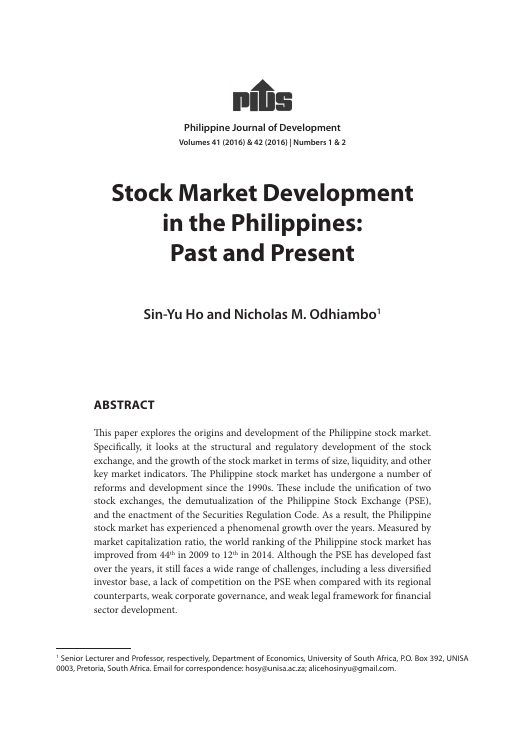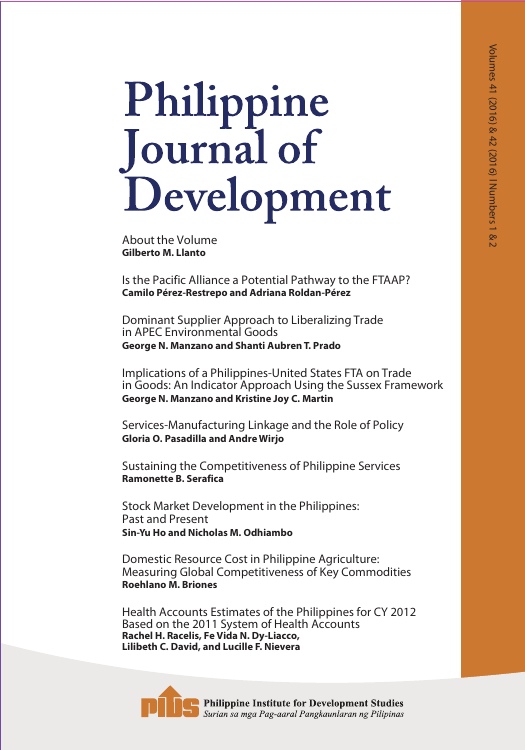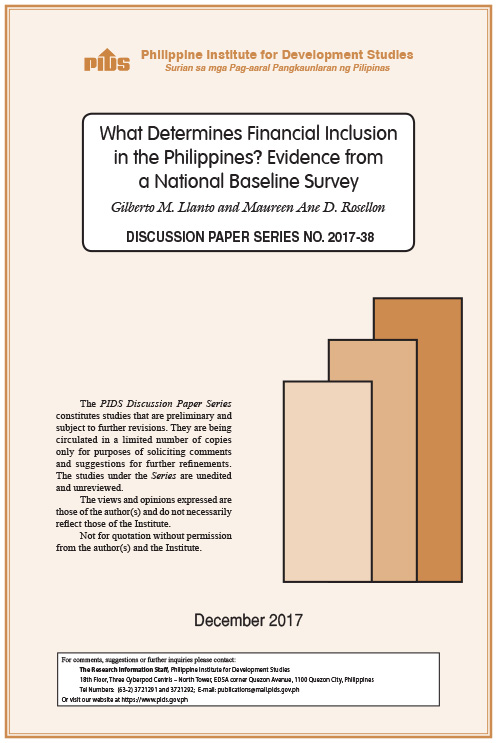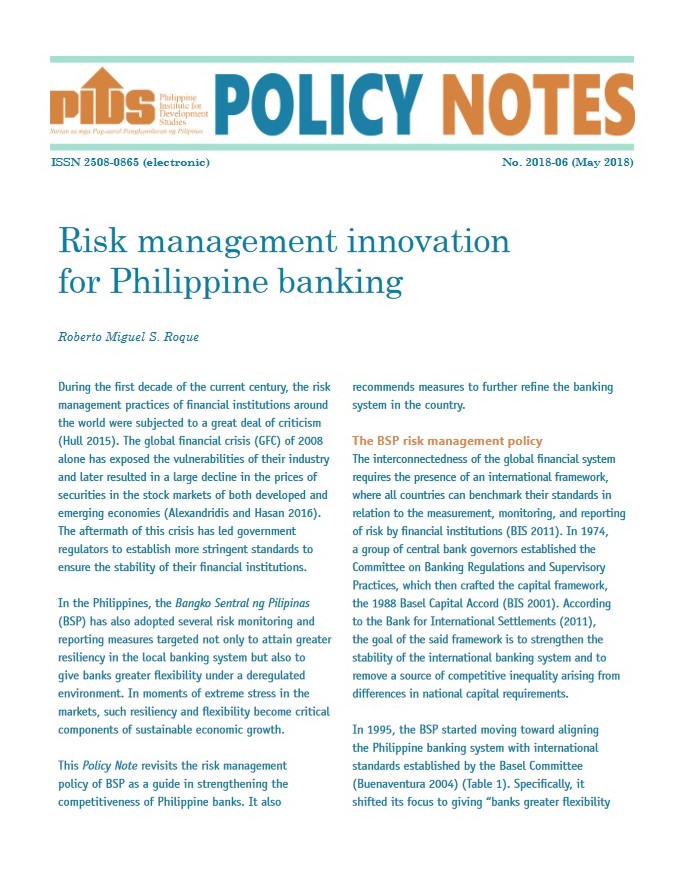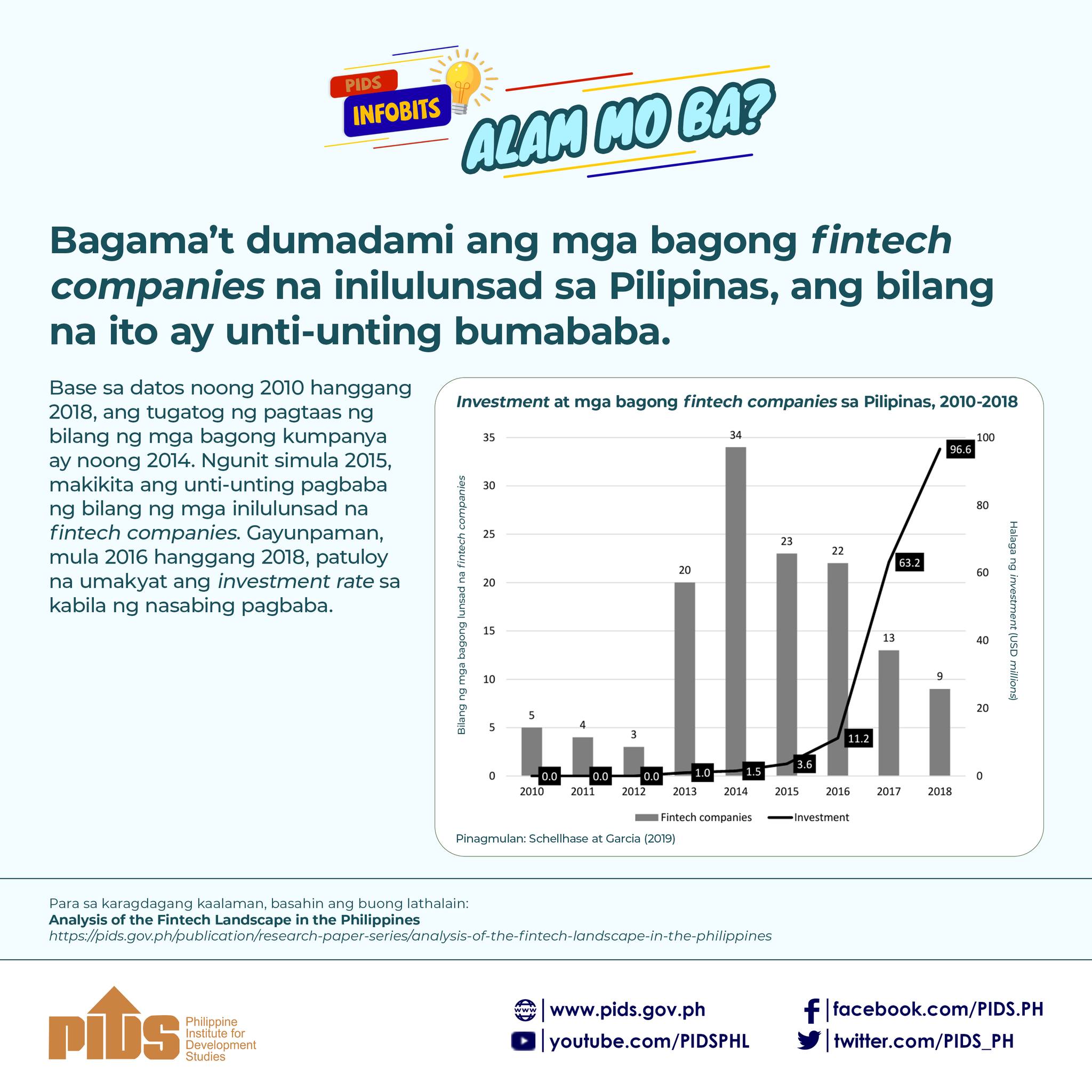This paper explores the origins and development of the Philippine stock market. Specifically, it looks at the structural and regulatory development of the stock exchange, and the growth of the stock market in terms of size, liquidity, and other key market indicators. The Philippine stock market has undergone a number of reforms and development since the 1990s. These include the unification of two stock exchanges, the demutualization of the Philippine Stock Exchange (PSE), and the enactment of the Securities Regulation Code. As a result, the Philippine stock market has experienced a phenomenal growth over the years. Measured by market capitalization ratio, the world ranking of the Philippine stock market has improved from 44th in 2009 to 12th in 2014. Although the PSE has developed fast over the years, it still faces a wide range of challenges, including a less diversified investor base, a lack of competition on the PSE when compared with its regional counterparts, weak corporate governance, and weak legal framework for financial sector development.
Citations
This publication has been cited 2 times
- Ho, Sin-Yu and N.M. Odhiambo. 2018. Analysing the macroeconomic drivers of stock market development in the Philippines. Cogent Economics & Finance, 6, no. 1, 1451265-145. Taylor & Francis Journals.
- Ho, Sin-Yu and Nicholas Odhiambo. 2017. Analysing the macroeconomic drivers of stock market development in the Philippines. Working Papers 23439. University of South Africa, Department of Economics.

